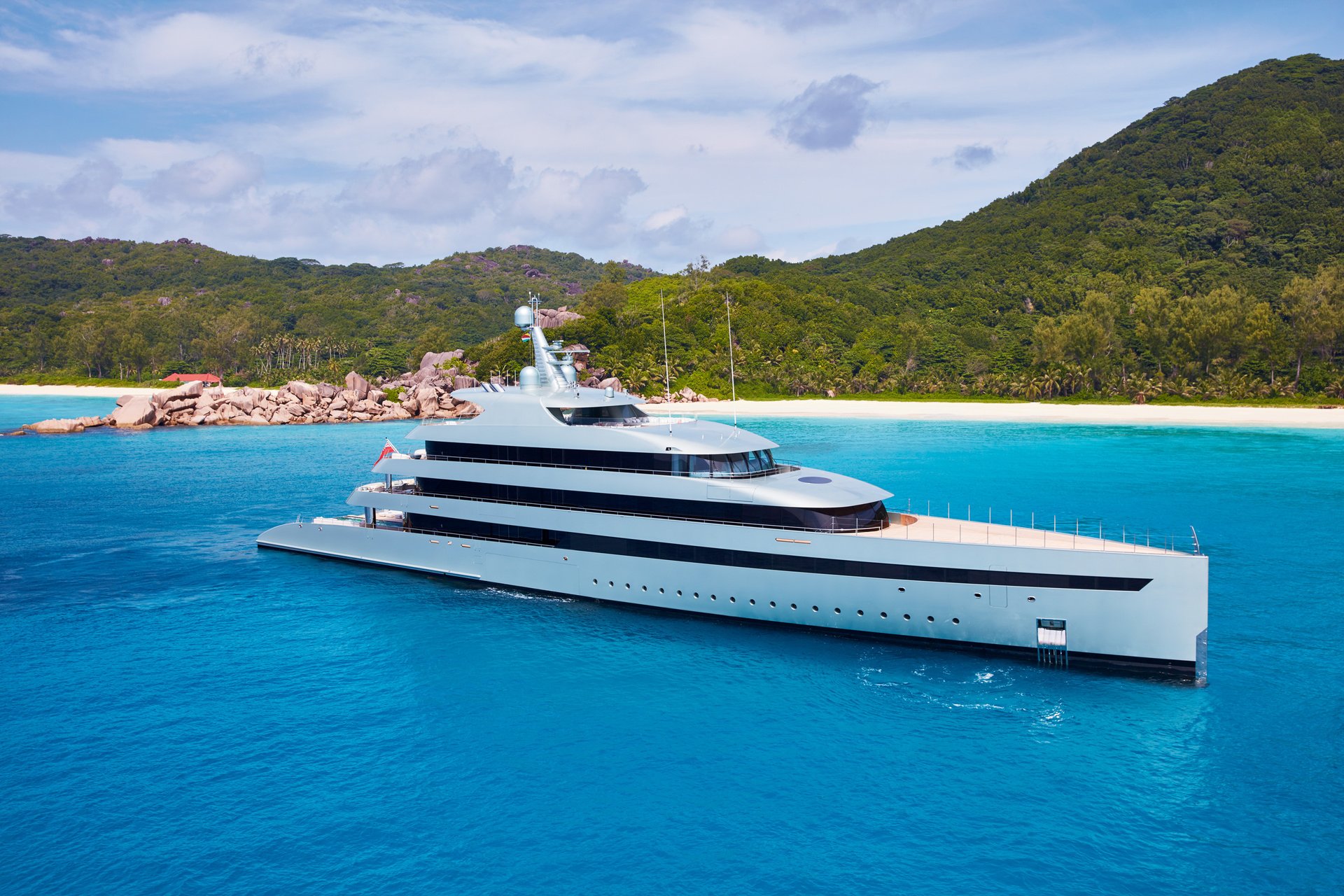Les Chefs de Feadship
Haute Cuisine on the High Seas

This article has previously been published in the 19th edition of PILOT.
Going to sea doesn’t mean waving goodbye to haute cuisine. Au contraire, only the highest standard of gastronomy is good enough for the global fleet of Feadships. There might not be a Michelin guide to Feadship galleys but all are built and specified to an incredible standard by owners who rightly expect the very finest cooking during their time on board. What is it like for top chefs to create gourmet meals for this select group of guests?
Just like in the best restaurants, the majority of Feadships have not one but two chefs. This reflects both the hard work involved and a desire to assure that the quality of the food is matched by its diversity. The Feadship Savannah has chefs from Sweden and France who have built up experience in a variety of international settings.
MARKUS My first introduction to the world of cooking came at the tender age of fourteen. At school in Sweden I did work experience in a hotel restaurant. I was sent to the basement to peel 100 kg of potatoes with the promise that I could come upstairs and do some cooking once I’d finished. But the potatoes took all day and the next day there were 20 kg of carrots to deal with too, then 10 kg of onions. It wasn’t until my fourth day that I finally got promoted to the kitchen to do some actual fun stuff. In retrospect this was a great learning curve – it taught me that you first have to earn your stripes before you can move onto the next step. Anyway, I must have caught the restaurant bug because, after leaving school, I trained as a chef and worked in seventeen different restaurants before joining the yachting industry. I’ve done everything from appetisers to the hot stove to pastries in places like a Swedish restaurant in New York and a two-Michelin-star restaurant in Stockholm. On my previous boat I became head chef after two years of hard work, and now I have the same position on board Savannah.
AGATHE I’ve worked in restaurants my whole life. I started out on shore in my native France, where I got a very solid foundation in food preparation and service, especially French cuisine. Eventually I grew a bit tired of the restaurant way of doing things and decided to try out a yacht. After just one season I knew I was hooked. My previous assignment was as chef on a 35-metre yacht. After leaving I was offered several different positions, and felt that Savannah was the best fit for me. I really love it here. We have a lot of people onboard, and we are like family to each other. All crew areas are carefully crafted to ensure the well-being of the personnel: we have the best food, the best equipment, comfortable social areas. Everything is exceptionally pleasant, leading to a great ambiance and friendly group dynamics.
MARKUS The biggest difference between working on land and on a yacht is that, on the latter, you only have one chance to impress on any given day. In a restaurant you might have a hundred people to serve and a wide range of meals to choose from. If guests don’t like what you have, you can quickly rustle up something else and save the situation. On a yacht, however, there are rarely more than twelve guests and you have to get both the appetisers and the main course right the first time. It’s not like a restaurant where you can reimburse people if they’re not happy. The key to success on a yacht is to get to know your guests really well – be a mind reader, really. What did they do last night? Did they have a big party? The greatest challenge is having a wide spectrum of dishes and produce, and everything you need on board in advance. You have to be able to cater to every palate, and this can be especially tricky when you have charter guests. I think my style is Scandinavian, with all sort of other influences and ideas taken from across the world. The upshot is a cuisine that is as clean and as healthy as possible.
AGATHE I don’t really have a favourite dish. It all depends on the moment and the circumstances, like the places I’ve visited recently or the products at hand. But I will always have a soft spot for French cuisine. It’s part of my identity and I have an instinctive skill for it. I particularly enjoy working with an international crew, and love the feeling of improving my English a little every day. The people involved in the process of preparing, creating and serving great food are a close-knit team and that requires a great deal of communication between all the different staff. Basically it’s a great working and living atmosphere.
MARKUS Working on a boat you change the menu very often, while restaurants sometimes keep the same menu for several months or more. I love changing ingredients, styles and dishes, and discovering something new, everyday. Going to the market in the Seychelles is very different from the Côte d’Azur! In every place people are different and want different things, and it’s hard to define the perfect galley. One thing is for certain, though... You have to forget all the other kitchens you’ve worked in and make the current one work. I was lucky enough to be able to set up this galley the way I like it with the build captain, placing all the pots & pans and machines in a way that allows me to be comfortable at work. You wouldn’t normally get that in a restaurant! The end result on Savannah is absolutely beautiful.






